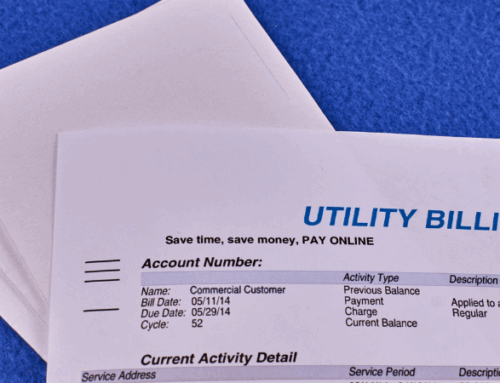In the face of escalating climate change and environmental impacts, the call to transition to a sustainable energy future has never been more urgent. Developing a net-zero and carbon-neutral energy strategy is critical for organizations looking to mitigate their environmental impact and align with global climate targets. This article will explore the multifaceted approach required to achieve such an ambitious goal, encompassing the adoption of renewable energy, the implementation of energy efficiency strategies, and the integration of innovative energy tech. As we delve in, we will highlight the policy initiatives, best practices for business organizations, and the overall impact on the energy industry.
Carbon Neutral vs. Net Zero
While these terms are often used interchangeably when discussing the environment and energy sustainability, they are quite different. Let’s explore the distinction between carbon neutral and net zero in more detail below.
What Does It Mean To Be Carbon Neutral?
Being carbon neutral means that an organization or business balances out their carbon dioxide (CO2) emissions with an equivalent amount of carbon savings elsewhere. This process can involve offsetting carbon emissions at your business by investing in carbon-reducing projects, renewable energy projects, or other initiatives that remove CO2 from the atmosphere. It is important to note that the offsetting activities do not need to be onsite, or located at your business. Carbon neutral strategies are specifically focused on reducing CO2 and net emissions are looked at on a comprehensive basis.
So What Is Net Zero?
Net zero refers to the direct balance between carbon-emitting activities and carbon-eliminating activities. Unlike carbon neutrality, which can be achieved by offsetting emissions through outside projects that may not directly relate to the business, achieving net zero requires a direct change in business processes to eliminate emissions. Many organizations attempting to reach net zero drastically reduce all forms of greenhouse gas emissions across all business operations. Then, any remaining emissions are balanced by removing an equivalent amount from the atmosphere. This is done using methods such as direct air capture and storage (DACS).
What Is The Key Difference?
When analyzing the key differences between being carbon neutral or net zero, net zero is generally viewed as a more ambitious goal, reflecting a commitment to climate change. Carbon neutrality is a step in the right direction, but is sometimes criticized for allowing businesses to rely on outside activities without making any direct changes.
Acts & Regulations For A Carbon-Free Environment
Here are some of the legislative efforts and energy policies and regulations encouraging the reduction of greenhouse gas emissions, the enhancement of energy efficiency, and the renewable energy transition:
1. American Clean Energy and Security Act (not yet passed)
This Act is aimed at creating a carbon trading system in the United States that would promote the reduction of carbon emissions and installation of renewables. This Act has been proposed, but has not yet been passed.
2. Infrastructure Investment and Jobs Act
Signed into law in 2021 under President Biden, this Act includes investments in clean energy, electric grid modernization, electric transmission network upgrades, and electric vehicle charging infrastructure.
3. European Green Deal
The EU is aiming for a climate-neutral continent by 2050 with the European Green Deal. This plan includes a wide range of initiatives, from cutting carbon emissions to investing in green energy technology.
4. Fit for 55
Part of the European Green Deal, the Fit for 55 aims to reduce net greenhouse gases by at least 55% by 2030. The 55% reduction will be benchmarked against 1990 levels. The act includes tighter regulations for automobile emissions and helps to promote the development of renewable energy projects.
5. Energy and Climate Law
Passed in 2019 in France, this law outlines a plan to achieve carbon neutrality by 2050. It includes measures to drastically reduce carbon emissions, promote renewable projects, and incentivize energy efficiency.
6. Canadian Net-Zero Emissions Accountability Act
Passed in Canada 2021, this Act legally binds the government to achieve net-zero emissions by 2050. It establishes a roadmap with benchmarks for the government to achieve and requires the government to develop formal plans to meet these targets.
7. Climate Change Act 2008 (2019 Amendment)
In 2008, the UK became the first major global player to pass a law to achieve net zero by 2050. The amendment was updated in 2019 which removed legally-binding targets and made them goals.
Why Would A Company Want To Achieve Net Zero Or Be Carbon Neutral?
There are many benefits for businesses and organizations alike to achieve net zero status or to become carbon neutral. Some of those benefits include:
- Become environmentally responsible
- Adhere to regulatory requirements
- Gain a competitive advantage with eco-conscious customers
- Reduce energy operating costs long term
- Attract new investment from those interested in the environment
- Enhance your brand and public image
- Reduce your total energy consumption and expenses
- Qualify for green financing and grants
- Become a leader in sustainability and corporate social responsibility
How Can A Business Achieve Net Zero Or Be Carbon Neutral?
It is a daunting task to become net zero or carbon neutral. And, depending on how your business consumes energy, it could be even more difficult. Let’s explore some of the more common practices that commercial and industrial customers can implement in order to promote sustainability and potentially achieve net zero or carbon neutral status.
Step 1: Evaluate Your Emissions
First, you need to evaluate your total impact on the environment. You can hire an environmental engineer to perform an analysis on your facilities to show you your total carbon output. Calculating your business energy consumption and total emissions is key to understanding so that you can develop an energy efficiency or net zero energy strategy.
Step 2: Reduce Emissions
Next, it is easier to become carbon neutral or achieve net zero emissions if you are emitting less CO2. Implementing specific energy efficiency measures to reduce your carbon footprint is a great way to ease the burden on your organization. Purchasing renewable natural gas supply, green energy credits, installing solar, replacing antiquated lighting systems, and upgrading your HVAC systems are some of the steps you can take to reduce energy consumption.
Step 3: Find Ways To Offset Your Footprint
Whether you are looking to simply become carbon neutral or you would like to achieve net zero status, you need to find ways to offset your carbon footprint. Carbon neutral focused companies can look to external projects that can counter their own CO2 emissions. If you want to achieve net zero, you will need to implement onsite measures such as carbon capture, use, and storage systems (CCUS) to completely zero-out your emissions.
How Is This Impacting The Energy Industry?
Because many organizations are now focused on becoming more sustainable, many energy companies are pivoting away from fossil fuels and into renewables. In fact, if you look at energy trends in 2024, you will notice that there are many new energy efficiency companies that are helping to facilitate the energy transition. From wholesale energy market companies involved in battery storage to distributed energy generation system developers promoting renewable communities, there are many options for consumers who are looking to go green.
Need Help Developing A Net Zero Or Carbon Neutral Strategy?
Our team of energy experts has a comprehensive understanding of how energy gets consumed in commercial and industrial so that we can help you develop a plan for reducing your carbon footprint. Contact us today to learn more about the various energy efficiency and renewable measures you can take to become a more sustainable and environmentally-friendly business today.



